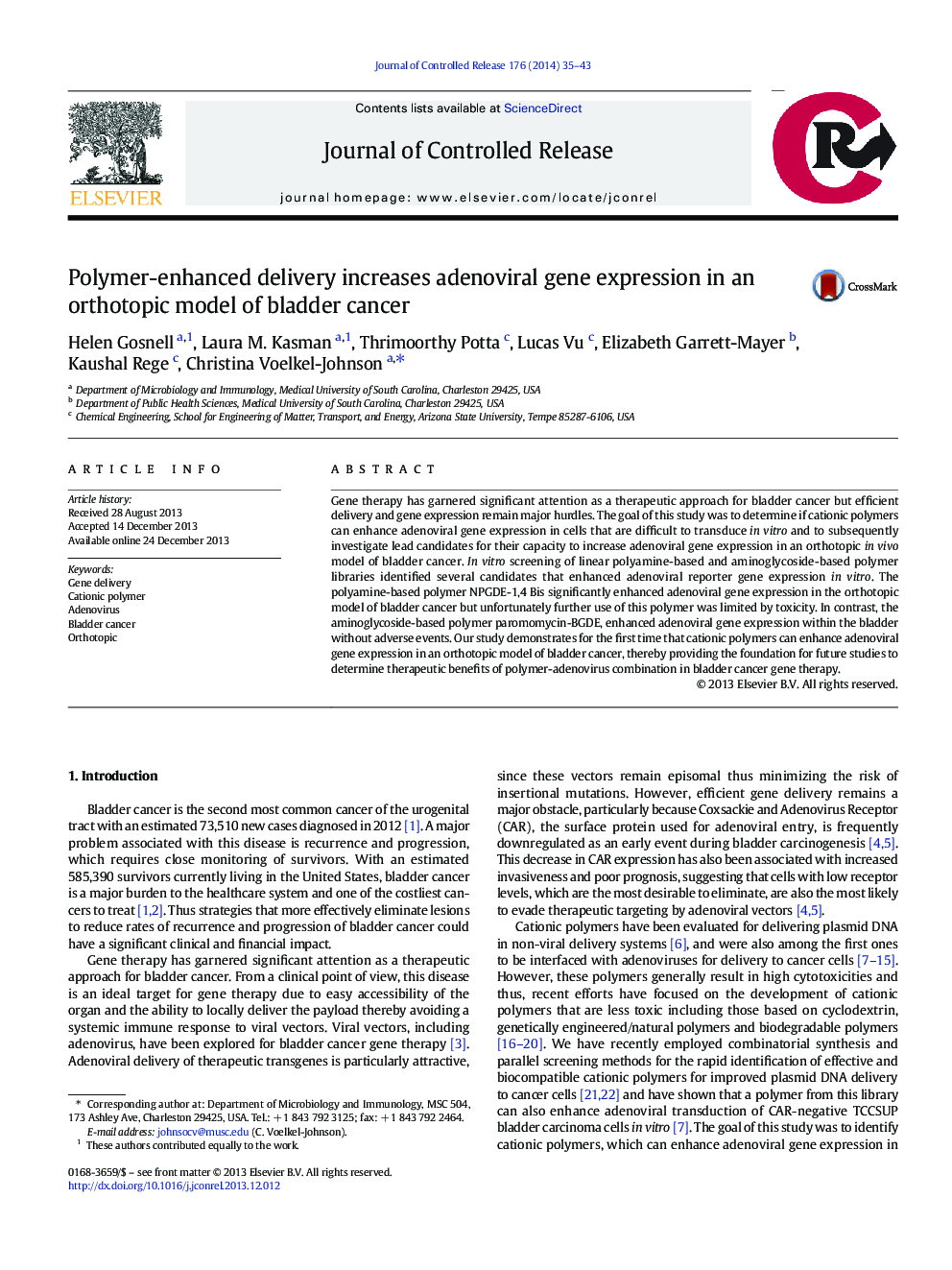| Article ID | Journal | Published Year | Pages | File Type |
|---|---|---|---|---|
| 1424122 | Journal of Controlled Release | 2014 | 9 Pages |
Gene therapy has garnered significant attention as a therapeutic approach for bladder cancer but efficient delivery and gene expression remain major hurdles. The goal of this study was to determine if cationic polymers can enhance adenoviral gene expression in cells that are difficult to transduce in vitro and to subsequently investigate lead candidates for their capacity to increase adenoviral gene expression in an orthotopic in vivo model of bladder cancer. In vitro screening of linear polyamine-based and aminoglycoside-based polymer libraries identified several candidates that enhanced adenoviral reporter gene expression in vitro. The polyamine-based polymer NPGDE-1,4 Bis significantly enhanced adenoviral gene expression in the orthotopic model of bladder cancer but unfortunately further use of this polymer was limited by toxicity. In contrast, the aminoglycoside-based polymer paromomycin-BGDE, enhanced adenoviral gene expression within the bladder without adverse events. Our study demonstrates for the first time that cationic polymers can enhance adenoviral gene expression in an orthotopic model of bladder cancer, thereby providing the foundation for future studies to determine therapeutic benefits of polymer-adenovirus combination in bladder cancer gene therapy.
Graphical abstractAdenoviral particles inefficiently penetrate bladder cancer cells with low or absent expression of the Coxsackie Adenovirus Receptor (CAR). Complexing adenoviral particles with a biocompatible polymer increases gene expression.Figure optionsDownload full-size imageDownload high-quality image (99 K)Download as PowerPoint slide
